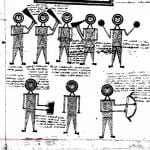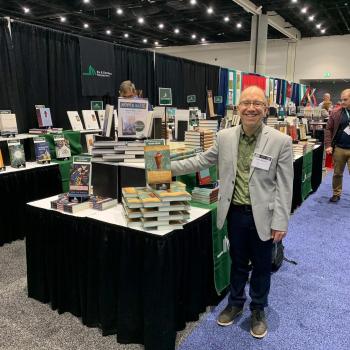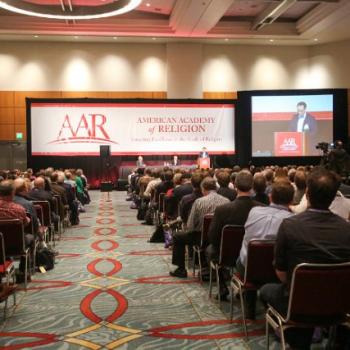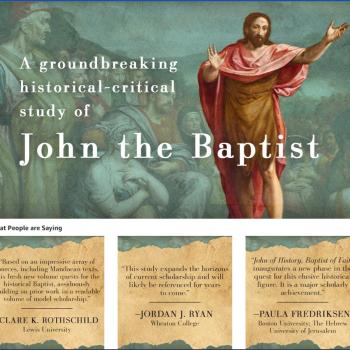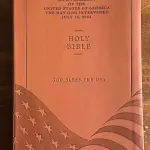This post will be the first of two about the Digital Humanities session I presided over at AAR/SBL in San Diego. I thought of a possible connection with mythicism as I was listening to one of the papers, and so I will work that in as well. What does mythicism have to do with the Digital Humanities? I’ll explain that in a second post about this session. And before doing anything else, I will apologize that I took so long to blog about this conference session that took place back in November.
Juha Pakkala and Ville Mäkipelto of the University of Helsinki started the session by presenting the Biblical Online Synopsis (yes, the acronym should be pronounced “boss”). It is an open-ended project that can be expanded infinitely, not a critical edition evaluating witnesses (it contains no hypothetical readings), but a text critical study at the manuscript level, including images and links to data in other digital databases. Many are still unaware how much the manuscripts of the MT differ. This project makes the plurality visible and accessible. They are aiming for a societal as well as an academic impact, on religious leaders and theology students. The global access will have a democratizing effect, as will the element of academic crowdsourcing. The layout in the demo version features 1-3 columns with different versions, which scroll together. Segmentation of the text is possible at different levels: phrase, word, lexeme. Semantic and syntactic agreements are indicated with highlighting. Text-critical comments can be pulled up. Manuscript images and secondary literature that is available are also linked from there.
If you’re wondering what kinds of deeper insights emerge form a project like this, I’ll say it highlights the complexity of something that sounds so trivial, the “word.” What constitutes one is a tough problem for projects like this, given that words, prepositions, cases, and other things vary across languages and make individual words or forms of words different. What constitutes “the same word” for purpose of comparison, highlighting points of agreement, and so on?
Claire Clivaz of the Swiss Institute of Bioinformatics presented on her project focused on Mark 16’s textual history. Leopold von Ranke said the historian had to be boring and farblos (without color). This project, on the other hand, is a scalar project to produce multimodal knowledge in the Humanities. You can take a look at it at:
Among the resources discussed was Helen Bond’s Bible Odyssey video. Clivaz noted the difficulty for any scholar seeking to address the public, where we might be less cautious or simply less nuanced than in our academic writing. Clivaz also discussed the “Bart Ehrman Project.” It has a team at Chapel Hill, and features videos by Daniel Wallace and others who are critical of Ehrman. On the other hand, Bart Ehrman’s own videos are posted on YouTube by Muslims, Dutch Skeptic, others outside the academy. Ehrman himself has not offered any full study of Mark 16, although he did write 3 blog posts on the topic. Do we have serious scholarly work in these instances? Not really, but we could.
Clivaz’s paper suggests that a sharable URL, linking to a precise point in a scholarly source, might be the next step in history of the footnote. Anthony Braxton has written a history of the footnote, as a history of modernity, emerging in the 16th century. Clivaz notes that Codex Bobiensis (K) from c.400 CE is on Wikipedia and has been for some time. A folio photo has been there since 13 years earlier. In Latin, it is completely different from other witnesses. Some other key points made include:
- Camille Focant: no mention of silence of women
- Keith Elliott: three significant variants, one complete new book.
- “Those who were with the boy” (qui cum puero erant)
- Hughes Houghton 2016 edition.
- Possible echo of Acta Petri 21:29, polymorphic Christology
- Torino Museum gave permission to place the image of the manuscript online
- Academic contributing to Wikipedia
- “From East all the way to the East”
- We have no manuscript of Mark before the 4th century!
- There is a need to theorize our discomfort with video “citation” but not quoting someone with a citation.
Stay tuned for more recap of this session soon! And check out this great overview of the history of the Syriac Digital Humanities in recent decades. See too this announcement about MorphGNT in which several projects related to digital manuscripts of the Greek New Testament combine forces.


